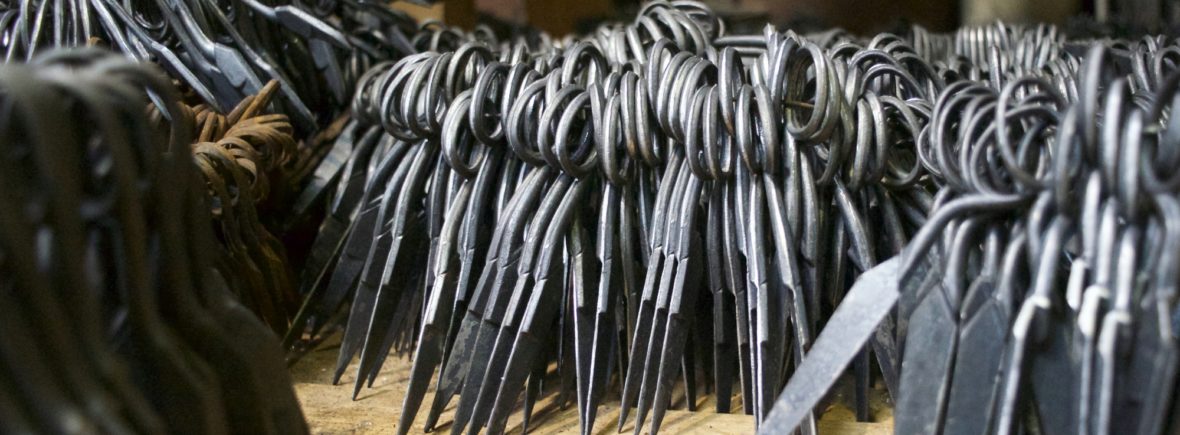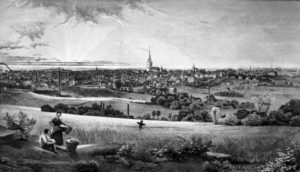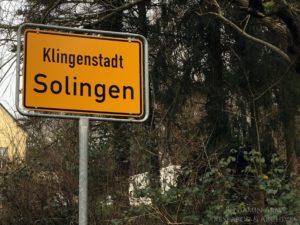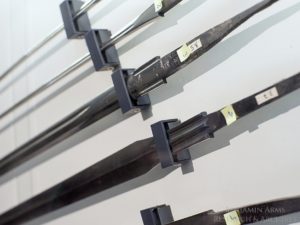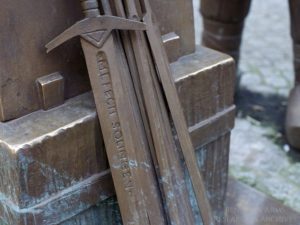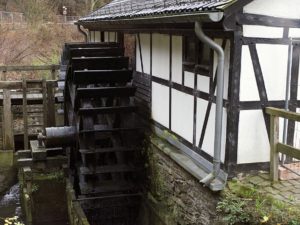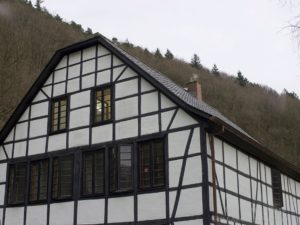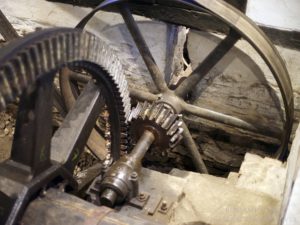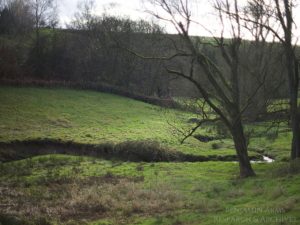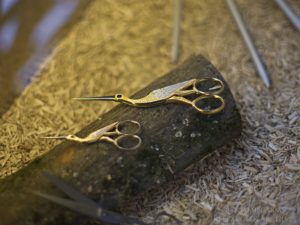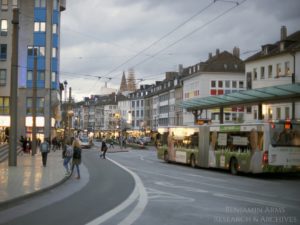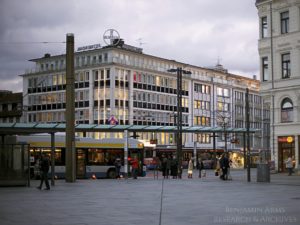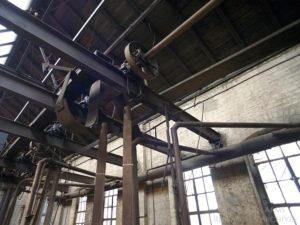Solingen – The City of Blades
Solingen is a city in western Germany in the North Rhine-Westphalia region, about thirty-five minutes east of Düsseldorf. The city has been known for it’s blade making prowess for centuries and was given the title “The City of Blades.” Highly skilled knife and swordmakers perfected their craft over the centuries and organized into powerful companies and guilds.
- Solingen in 1884
- Solingen Germany city sign
- Grafarth district in Solingen
- Grafarth district in Solingen
- Solingen city archives
- Blades made in Solingen
- Sword statue in downtown
- Hydro-powered grinding house
- Former waterwheel for a grinding house
- Balkhauser Kotten in Solingen
- Balkhauser Kotten water wheel gears
- River valley in Solingen
- Scissors made in Solingen
- Downtown Solingen
- Downtown Solingen
- Country view of Solingen
swords produced through hydro, steam, & diesel power
Solingen is a city of rivers. The city’s consistent and strong rivers supplied a endless supply of reliable power, allowing the manufacturers to become early adopters of hydro-powered factory tooling such as trip hammers, drop hammers, and grinding machines to achieve a high level of uniformity and quantity as of then unseen in the world of cutlery. These factories were also easy to convert to steam or diesel power as a centrally installed engine could replace the water wheel while the factory-wide drive shafts and belting required no alteration. The city’s factory organization secured it’s dominance in the cutlery world. In the 1960s Germany was responsible for 60% of the worldwide cutlery, and 70% of that was produced in Solingen.
- Scissors made in Solingen
- Flywheel system at scissor factory
- Scissor tools and dies
- Scissor factory in Solingen
- Cutlery workbench in Solingen
- Diesel factory engine in Solingen
The Solingen makers mark
Swords in their entirety were produced in Solingen, but the resident companies also exported many unmounted blades to other cutlers and fourbisseurs worldwide for assembly. Many varieties of blades and weapons bear the city’s name in addition to their cutler’s marks. The mark “Solingen” is not the name of a single cutler or sword assembler, but was adopted by all the city’s manufacturers to brand their reputation on edged blades and tools.
The City’s identity as sword and knife makers
Relics of blademaking exist everywhere in the city. Huge stone grinding wheels can be seen in gardens, churches, or town squares and sometimes alongside rusting forge hammers. Small bronze monuments featuring men around a anvil, or the city seal featuring two swords against a yellow and blue shield give the impression the city cherishes it’s past. Even some graffiti will feature sword components. The city’s rolling hills and valleys make it difficult to see the downtown metropolis, old town, or derelict factories only a street away. It’s a safe city with children taking buses and walking to school unescorted, and is easy to navigate. Its dichotomy of beautiful neighborhoods against factory smokestacks is quite pleasing.
Things to see in Solingen, Germany
Deutches Klingenmuseum: A museum dedicated to the manufacture and history of German blades. Nestled in the beautiful Grafrath district and is worth a whole day’s visit. Some traveling exhibits and demonstrations that may be listed on their website.
Balkhauser Kotten: A gorgeous and well-maintained blade grinding cottage. It’s situated on a picturesque river and its water wheel still powers the grinding and polishing wheels.
Wipperkotten: Similar to the Balkhauser Kotten as a working museum of the small blade making cottage.
Industry Museum: An excellent museum of the industrial age factory production of blades and scissors. All original machinery, dies, hammers and tools are in place and detail how blades were forged from beginning to end. One truly understands how innovative these cutlers were at streamlining the complicated forging and finishing processes edged implements require.
The Plagiarius Museum: A small museum dedicated to plagiarism by comparing the original products to their cheap replications. This museum fits here nicely as blades and their maker’s marks have been copied throughout the ages.
Stadtarchiv: The small but extremely thorough city archives has many original lithographs of the city as well as countless reference books for the city’s firms, citizens and factories. The collections must be accessed through an attendant and cannot be freely browsed, so this archive is particularly for researchers.
Grafrath: Historic district with half timbered houses with green shutters. Great for meals and unwinding.
Korkenziehertrasse: This manicured bike path wanders through the whole of the city’s rivers, downtown, and districts. Some panoramic views of the city and it’s many former smokestacks.
Wülfing Textile Town: A nearby Old textile factory town museum with original factory buildings, machines and tools. 40 minute drive (25 km) away.
Wuppertal Suspension Railway: Built between 1897 and 1903 it remains a monument to the industriousness of the area. The railway is still a major thoroughfare for Wuppertals’s citizens transporting thousands daily.
